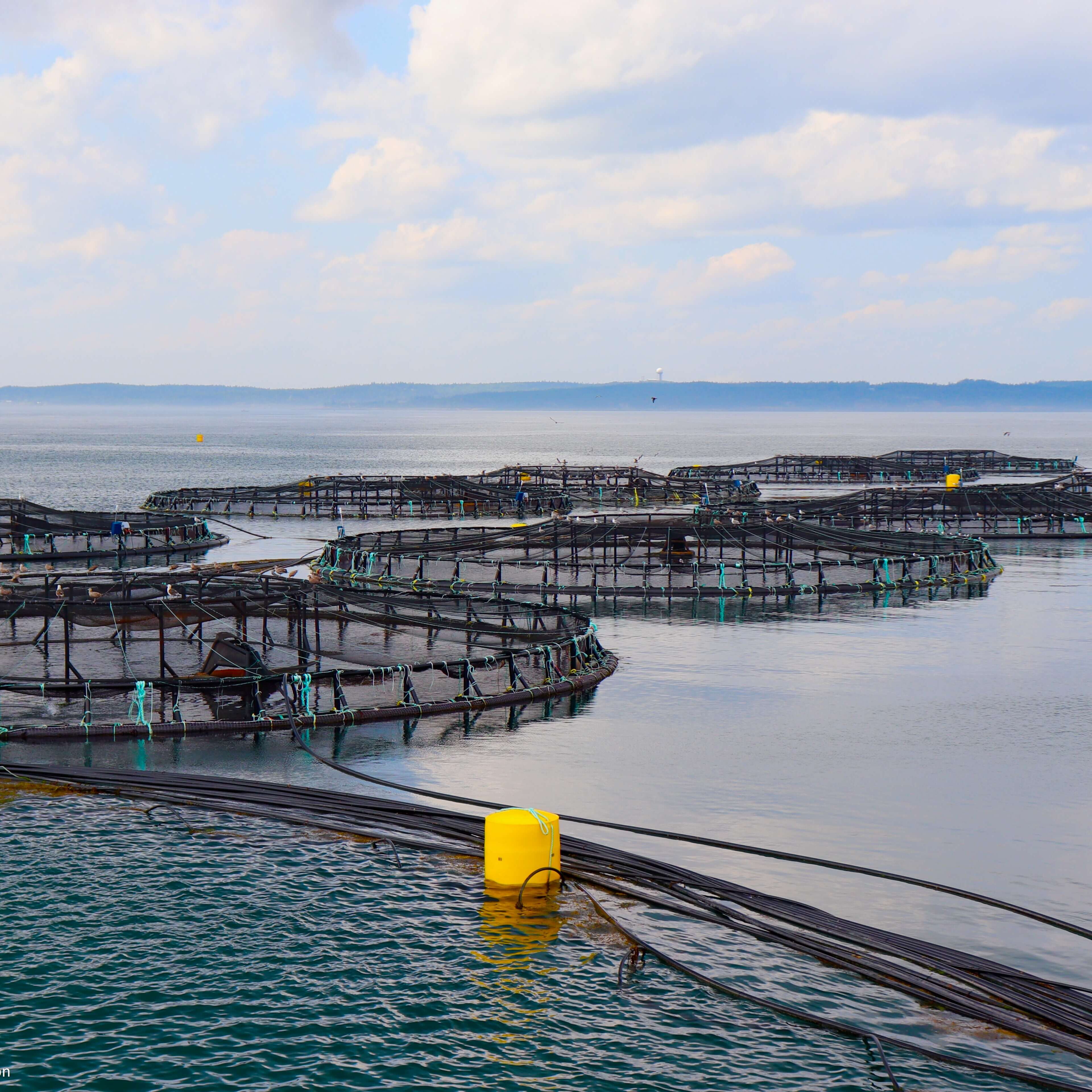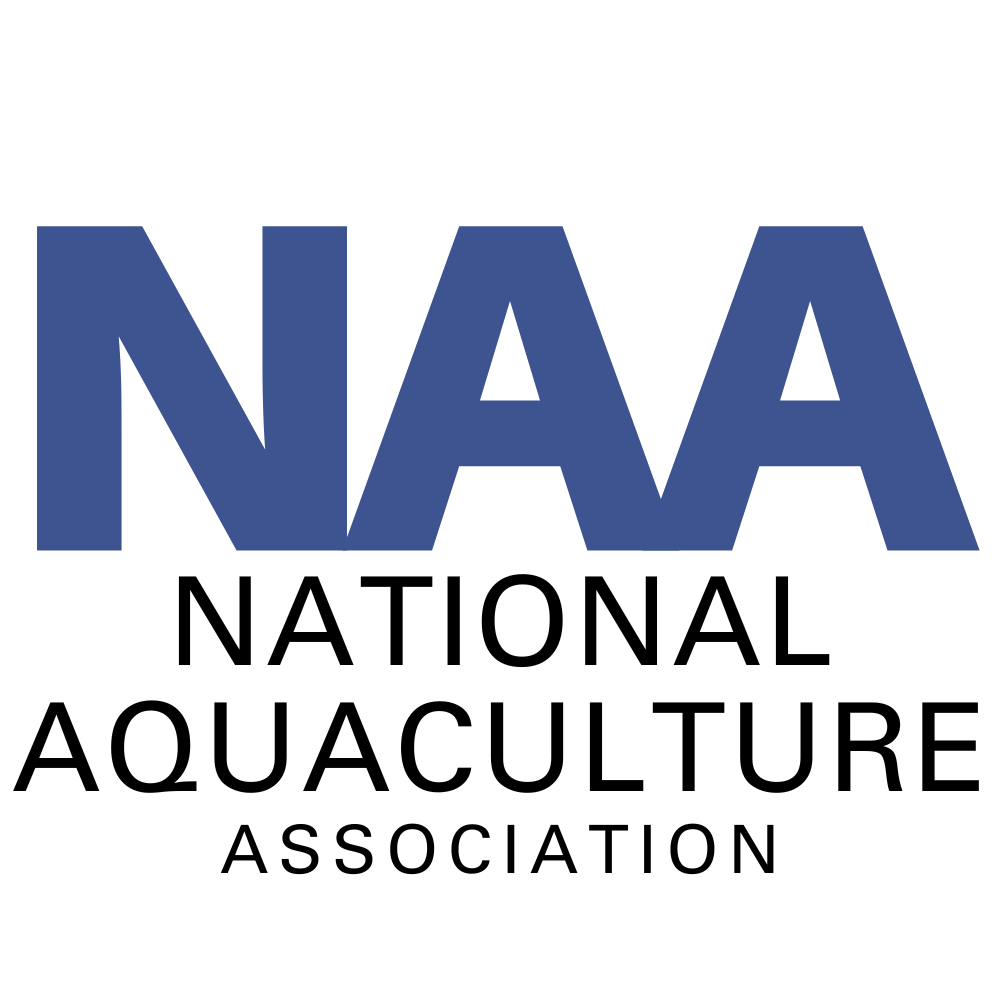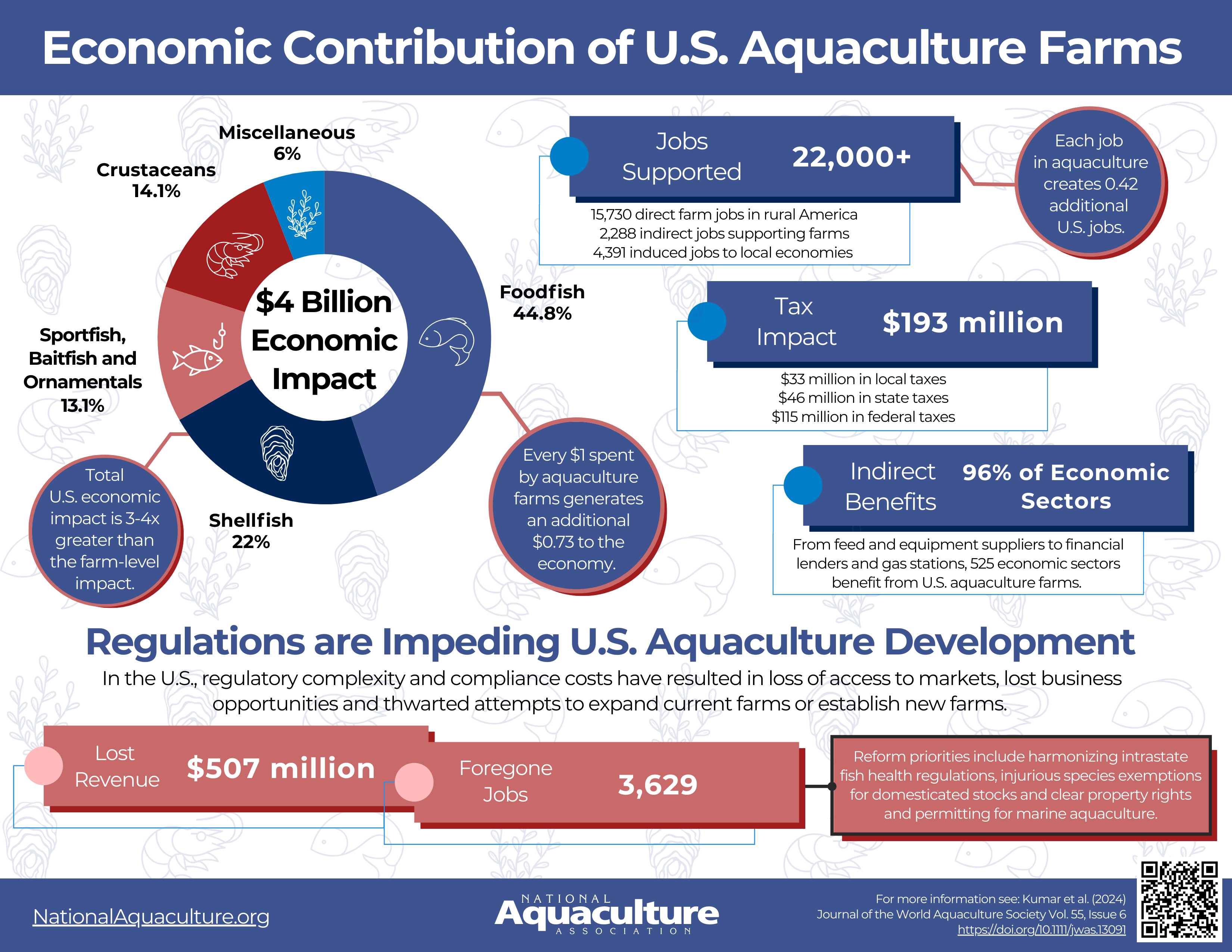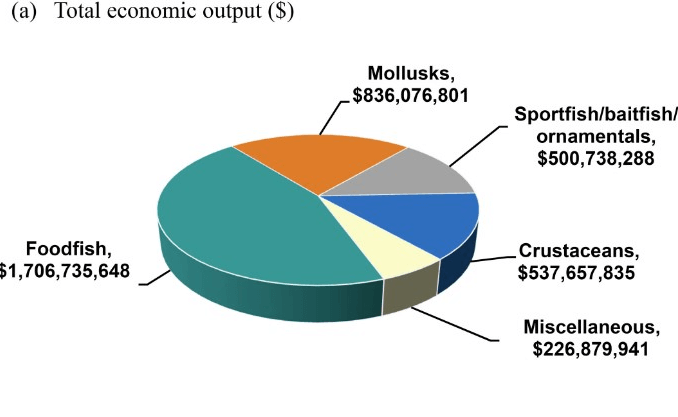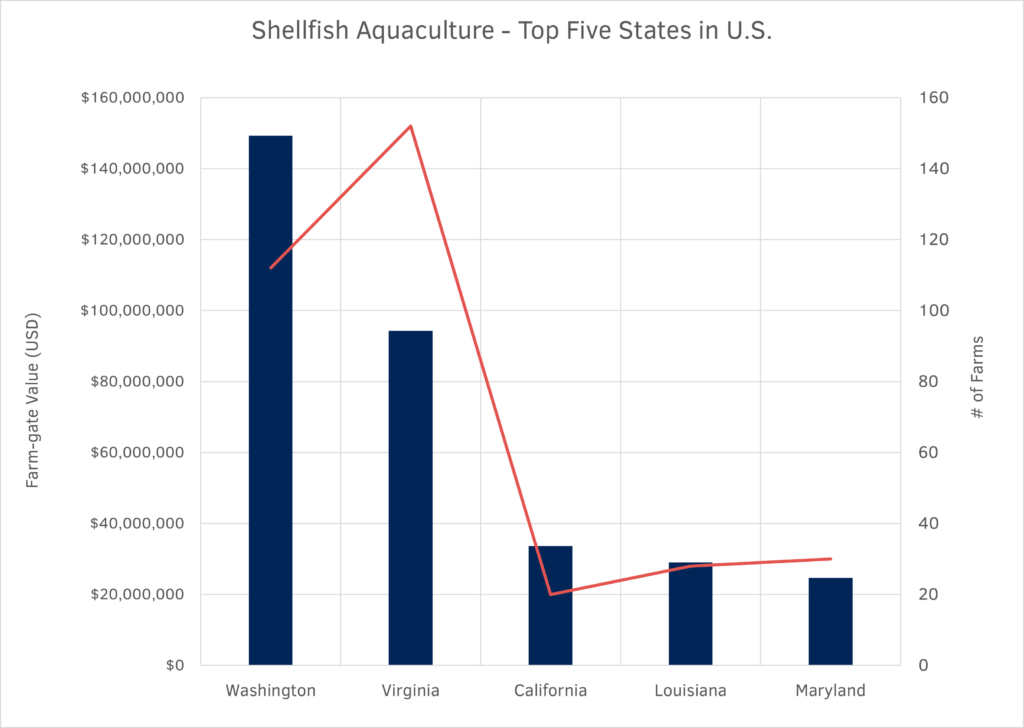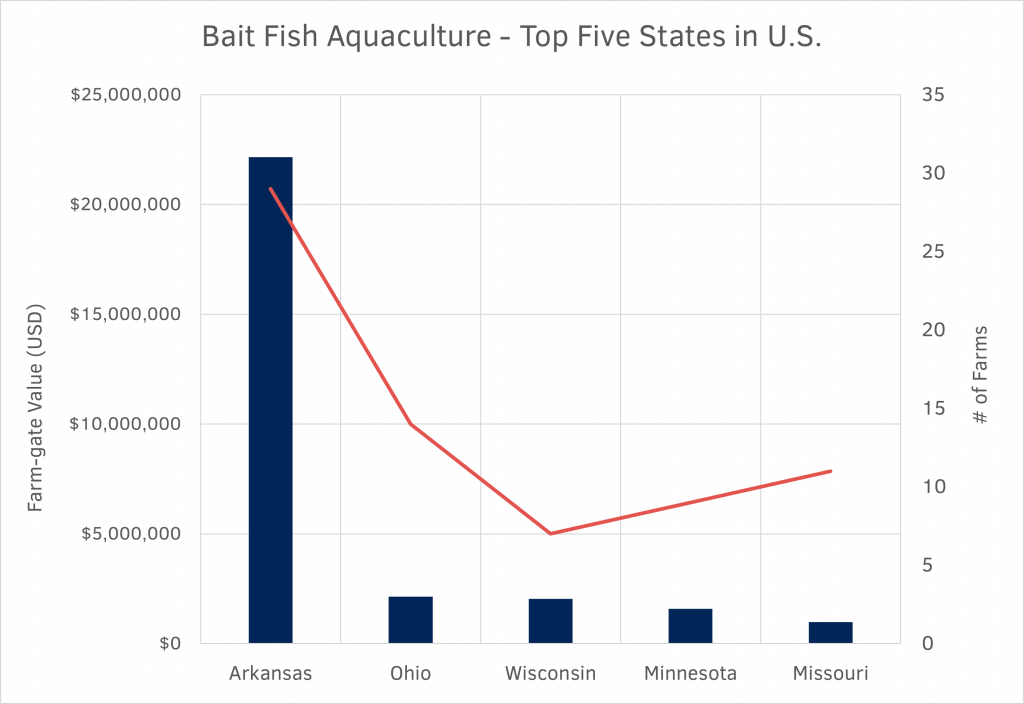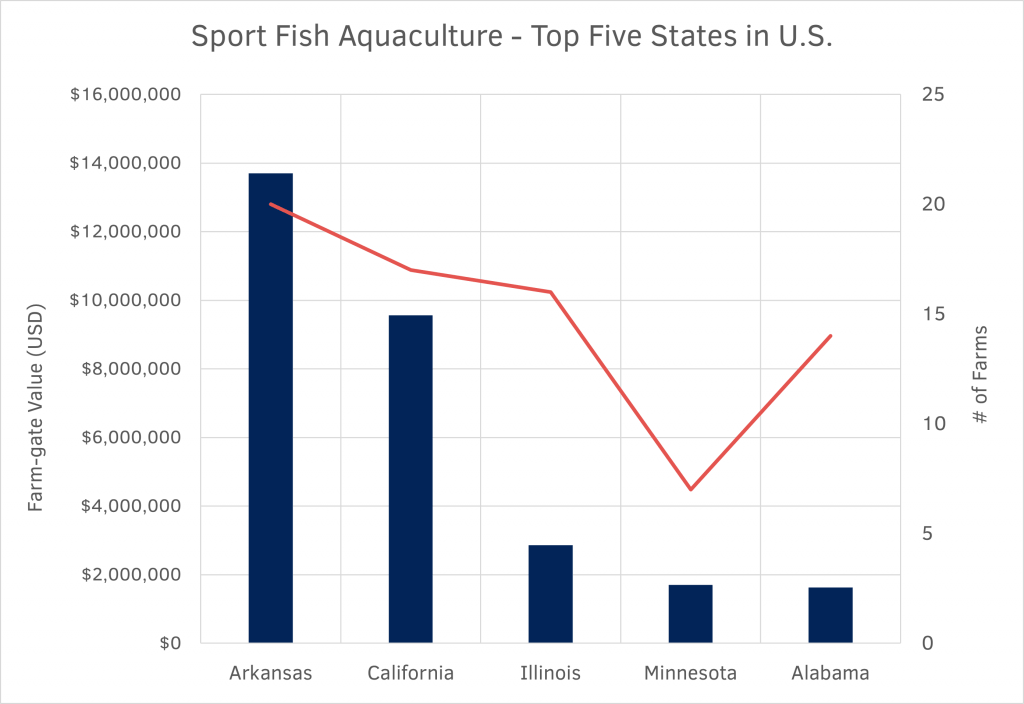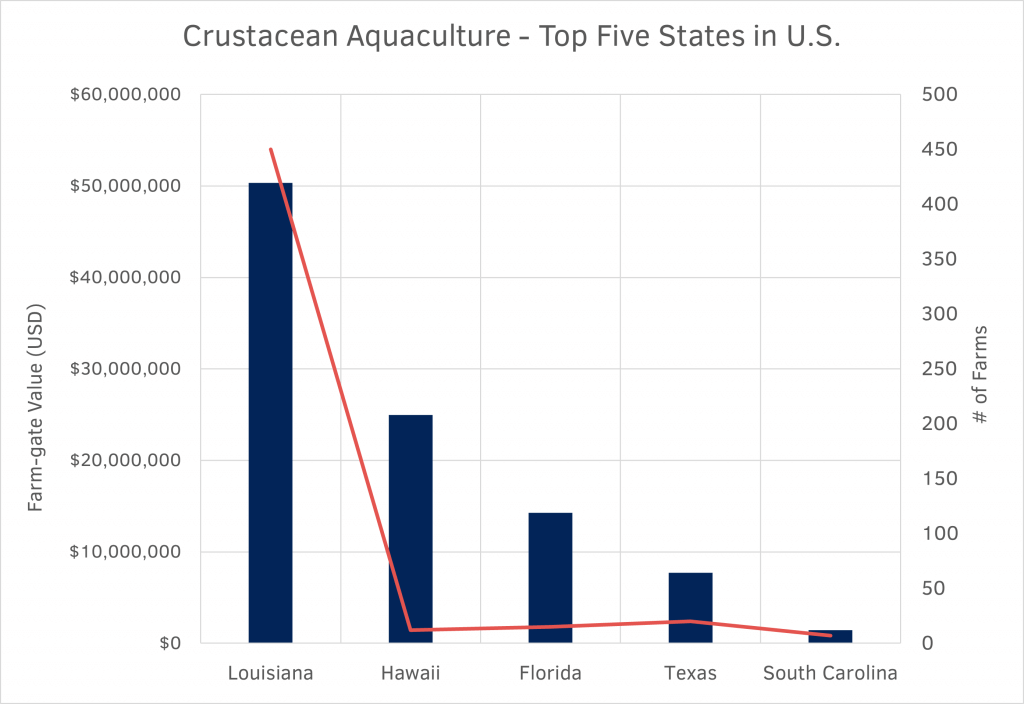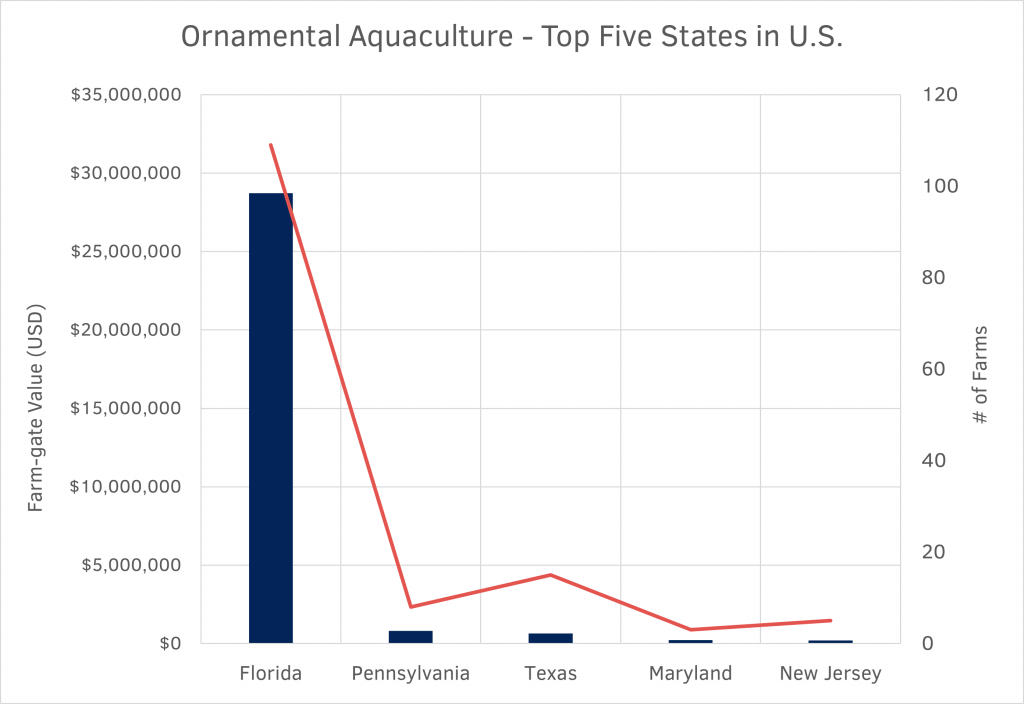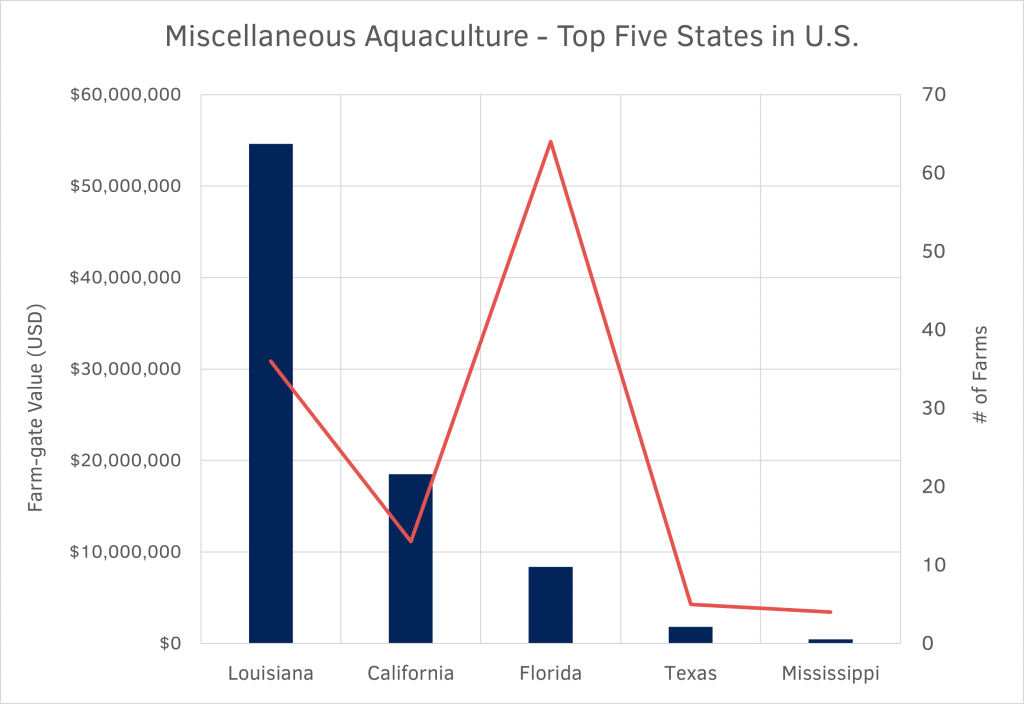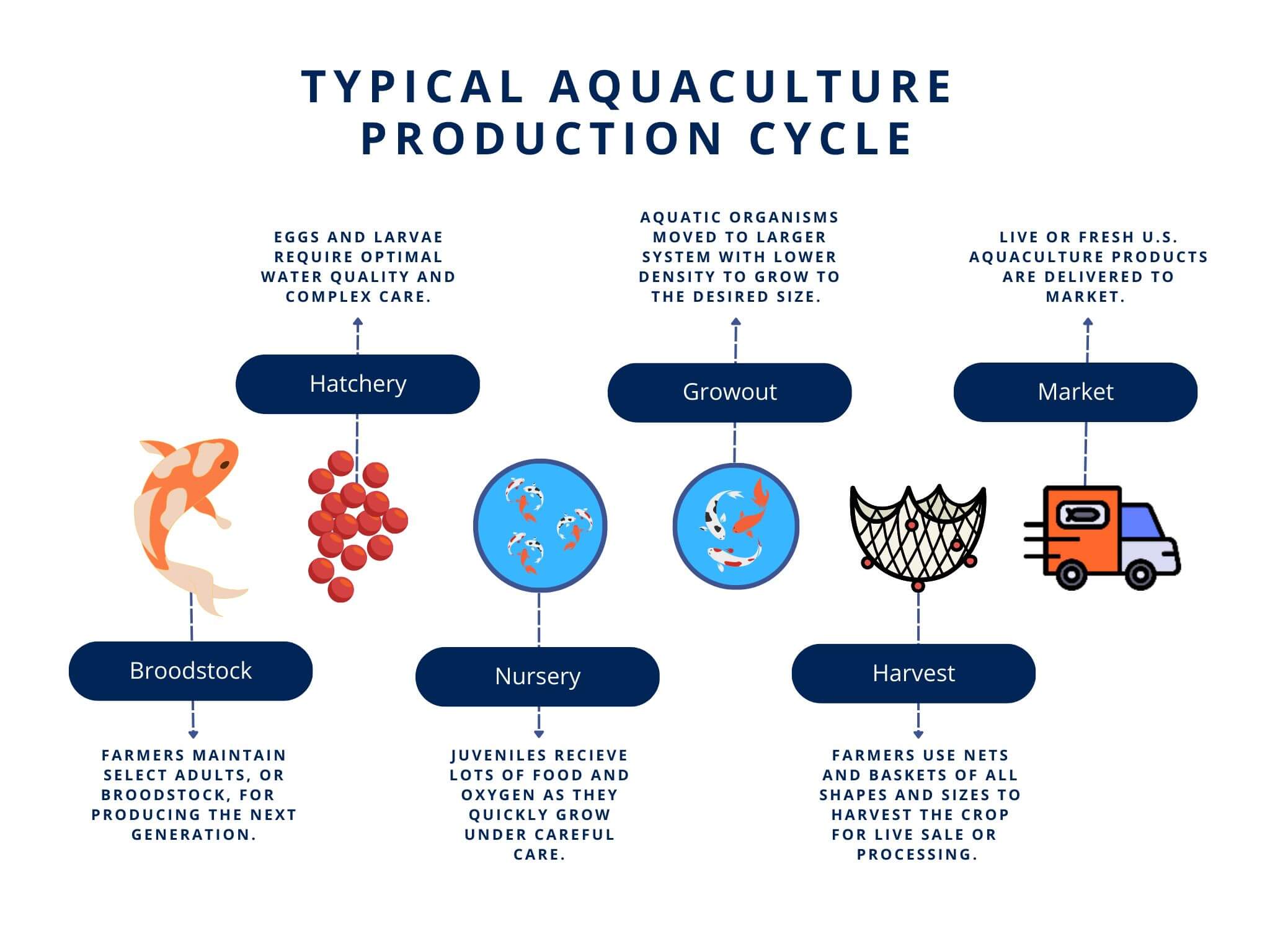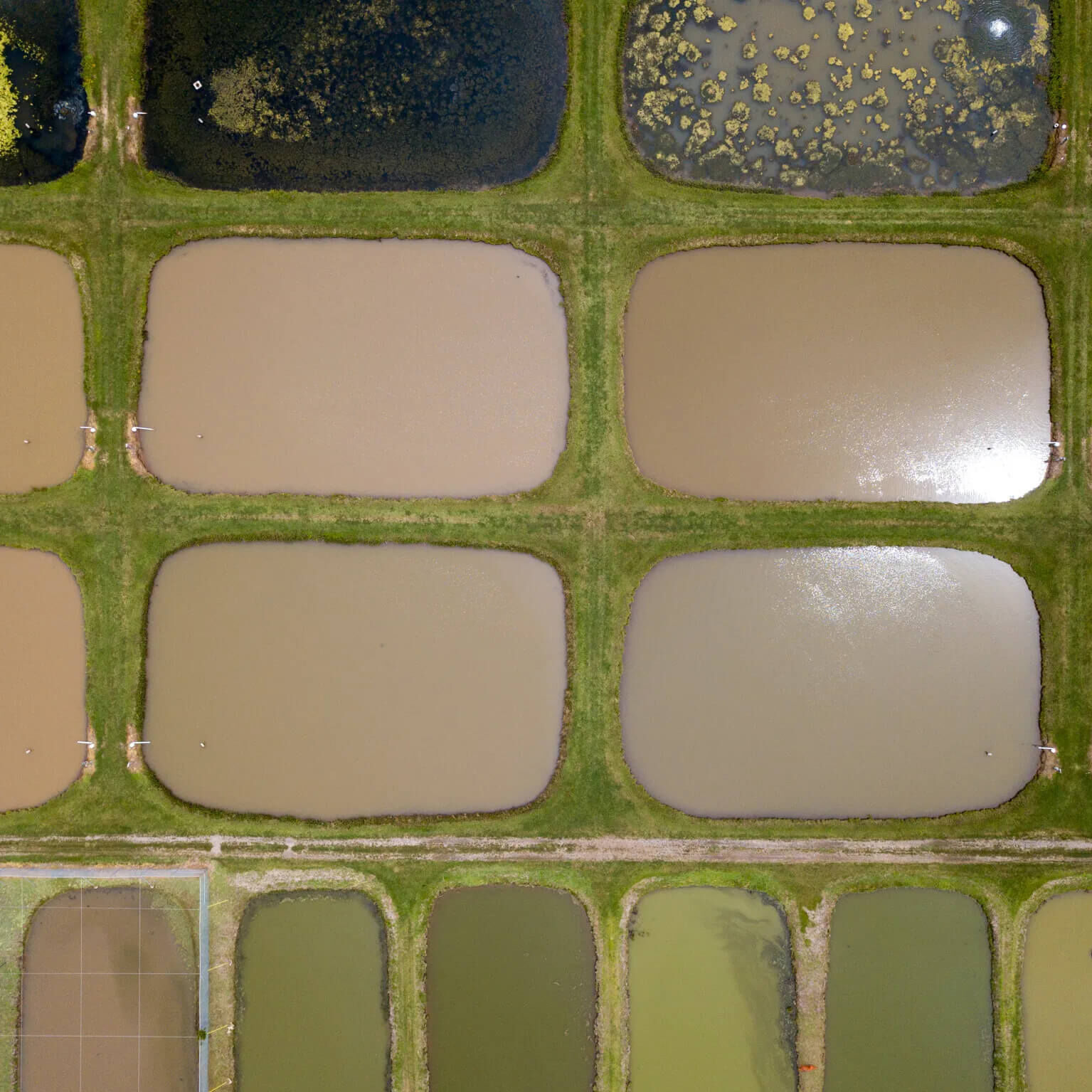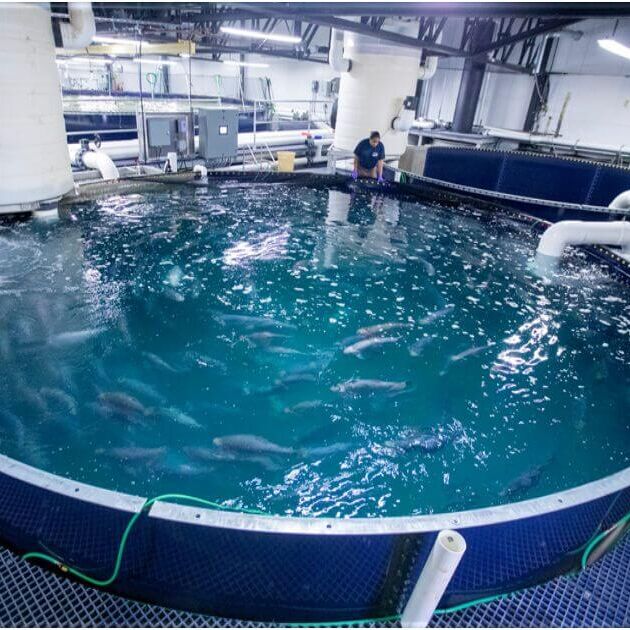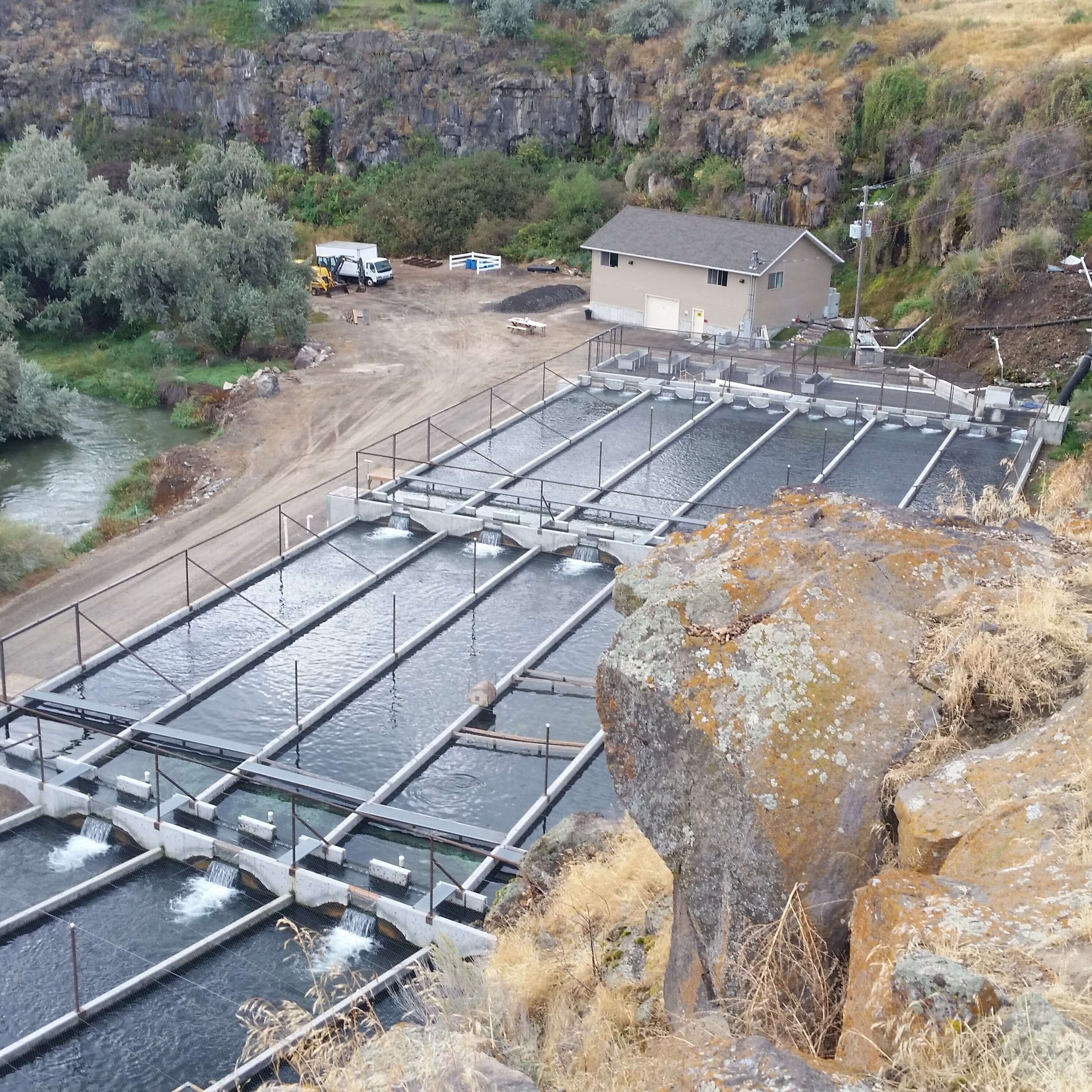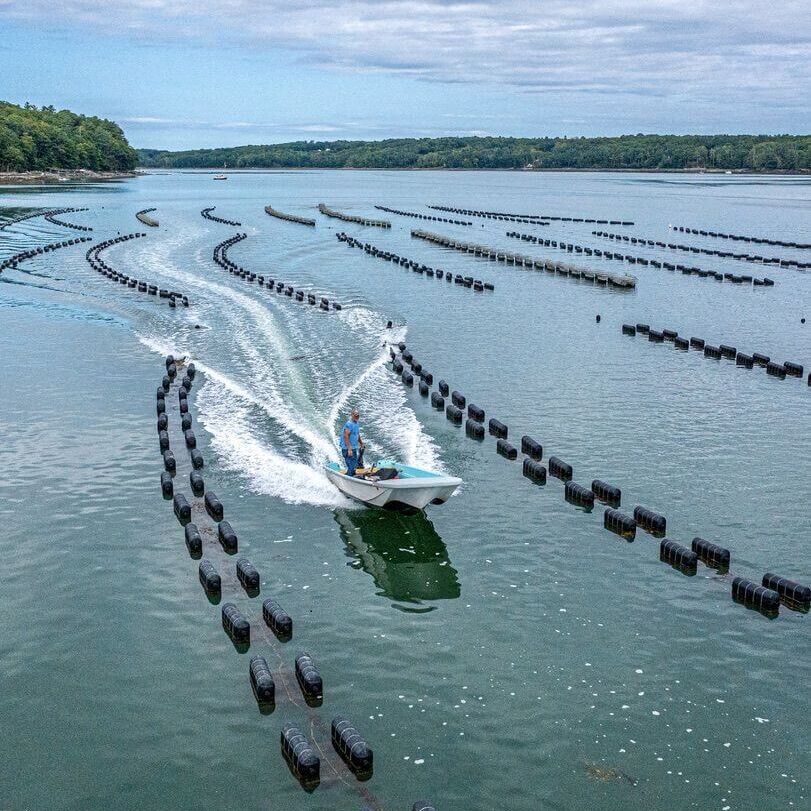Aquaculture is Agriculture
Aquaculture is the production of marine and freshwater organisms under controlled conditions.
In the United States, aquaculture farmers produce some 1,500 different aquatic species for many different purposes using a variety of different systems and methods.
Aquaculture farms provide approximately 22,000 jobs to Americans, often in economically disadvantaged areas like rural communities and working waterfronts. Aquaculture farms diversify local economies and stimulate ancillary industries and local businesses.
Why Aquaculture?
Seafood demand around the globe and in the United States has been increasing for decades. Harvest from wild capture fisheries has not increased since the 1980s and aquaculture has grown dramatically since then to meet this growing demand.
Aquaculture production grew by 609% from 1990-2020. Today, Aquaculture farms supply's more than 50% of all the seafood consumed around the globe.
Increasing Global Population
A doubling of global seafood production is required to feed the future.
Eight billion humans live on earth today, a 300% increase since the 1950s. An additional 1.7 billion increase in global population is projected by 2050.
Increasing Seafood Consumption
Global consumption has increased 5x since the 1960s.
Increasing standards of living and health have lead to a significant increase in animal protein demand around the world. Global annual per capita consumption of aquatic foods grew from 9.9 kg in the 1960s to a record high of 20.5 kg in 2019.
Wild Fisheries Harvest is Maximized
94% of wild fish stocks are maximally fished or overfished.
Wild capture fisheries production has not increased since the 1980s. 60% of fish stocks are harvested at a maximum sustainable rate and 34% are overfished (unsustainable). Aquaculture is the only answer to produce more seafood.
U.S. Imports 70-85% of Seafood We Consume
Food security is national security.
Despite being an agriculture powerhouse, the U.S. relies heavily on foreign aquaculture imports. The U.S. has a $17 billion seafood trade deficit. U.S. farmers stand ready to growth American's aquaculture sector and secure a more sustainable, equitable and secure future of our seafood.
Learn More About U.S. Aquaculture
U.S. Aquaculture Commodity Types
Many aquaculture farmers produce fish, shellfish or shrimp to provide wholesome seafood for Americans, but don't forget that there are many other uses for aquaculture.
Aquaculture's roots lie in recreation fishing through the production of both bait fish and sport fish. Ornamental farmers produce fish and plants that are enjoyed by thousands of hobby aquarists and help conserve wild species. U.S. aquaculture products are also used in human medicine, energy, the cosemtic and fashion industries, wildlife conservation and more!
While this industry may sound new, aquaculture has a long history in the United States dating back to the 19th century. Proud multi-generational family farms operate today all across the country, while each year new farmers pick-up their nets and waders for the very first time.
Data from Kumar et. al 2024.
U.S. Aquaculture Production Methods
Aquatic orgamisms are farmed in a variety of "systems" depending on each species unique environmental and physiological requirements, and the location, resources and objectives of the farmer. No two farms are quite the same! In many cases, an aquaculture product will go through several different systems thoroughout the production cycle.
While production methods vary greatly between farms and species, virtually all aquatic organisms farmed in the U.S. go through 5 basic phases before arriving at your local pet store, seafood market or restuarant.
Ponds
Ponds are the oldest and still most common aquaculture production system in the United States. Ponds range from as small as 1/10th of an acre up to 20 acres.
Most ponds just have an earten bottom, but some farms used plastic liners to control conditions, such as shrimp saltwater ponds. Levee ponds are constructed using earth moving equipment and are formed into neat retangular grids. Watershed ponds, conversely, follow the natural elevation of the land and form irregular shapes.
Ponds are fed by hand or using a specialized feeding truck or coveyance that broadcasts feed over a large area. Ponds are aerated by nautral algae in the water that consume carbon dioxide and produce oxygen. Supplemental oxygen is often added in the late night or early morning via paddlewheels or aerators. Fish are harvested from ponds by using long nets, called seine nets, and baskets or a crane net to quickly move fish to a transport tank.
Tanks
Tanks come in all shapes and size, and are used for a variety of purposes on aquaculture farms. Tanks are typically made of durable materials, like plastic, concrete, fiberglass and stainless steel. Tank size, shape and depth, flow rate and flow pattern and stocking density are all important considerations that vary greatly to meet the needs of the aquatic organism at different life stages.
Tanks are commonplace in the hatchery and/or nursery phases of production even when the organisms are then moved to ponds, raceways or coastal waters for final grow-out. Tanks can be used a simple flow-through systems, but most often are paired with complex filtration stages into a closed loop system referred to as a Recirculating Aquaculture System (RAS).
Through state-of-the-art engineering and expert operation, a RAS allows farmers to precisly control the aquatic environment and produce large quantities of product in a small footprint. U.S. RAS farmers can produce and provide local sustainable seafood even in areas where the outdoor climate isn't suitable or space and resources are limited.
Raceways
Raceways operate like artificial rivers and are common for fish native to rivers like rainbow trout. Mant state and federal fish hatcheries utilize raceways to produce trout and salmonids for supplementing wild populations for recreation fishing.
Water moves in a single direction to mimic a natural flow and allows fish to gently swim in a single direction. Raceways are typically flow-through systems located near significant sources of water, like artesian wells or rivers.
Water flows in a single pass through a raceway via gravity, and typically 2 or more raceways are connected in a series. A waterfall is created at the end of each connected raceway to naturally add oxygen to the water as it flows through the system and is ultimately discharge to a consturcted wetland or holding pond before returning to public waters. Both farmers and regulatory authorities closely monitor water quality conditions on all aquaculture farms to ensure farms have no impact of the environment.
Shellfish Bags, Cages and Baskets
Commonly reffered to as 'shellfish', bivalve mollusks, like oysters, clams, mussels and scallops, are grow in coastal waters around the nation using a variety of different techniques. Shellfish start their life in sophistaced upland hatcheries where they are carefully cared until large enough to be placed out into coastal waters on submerged land leases.
Depending on the specific state's rules, farmers obtain leases in order to operate shellfish farms in public waters. Through the leasing process, farms are cited in locations which do not impact natural resources and are routinely monitored for public health and environmental compliance.
Many shellfish are grown in mesh bags or containers placed in neat rows along the bottom of the submerged lease. In other areas with deeper water, shellfish are grown in floating or submerged gear at the top of the water column. Floating bags or cages are tied together into long lines and can be flipped to expose or submerge the shellfish, inside while longline baskets are lower or raised out of the water all at once.
Net Pens
Net pends are utilized in both freshwater and saltwater and can be found in small ponds or lakes as well as in nearshore and offshore marine waters. Pen design varies greatly depending on the species being produced and the environment where the pen is located. Small pens are commonly used in farm lakes to hold and protect juvenile fish before they are large enough to join adult populations. Large pens are commonly used in the ocean to produce market sized food fish like salmon.
Because fish are grown in the natural environment, net pens utilize very little energy to produce large quantities of wholesome, local seafood. Modern offshore net pens in the U.S. utilize state-of-the-art engineering, biology and remote sensing technologies to ensure the pens and fish are constantly monitored and cared for.
In the U.S., complex regulations protect the environment and ensure net pens are operated sustainably. Visit our Offshore Aquaculture page to learn more about this important topic.
